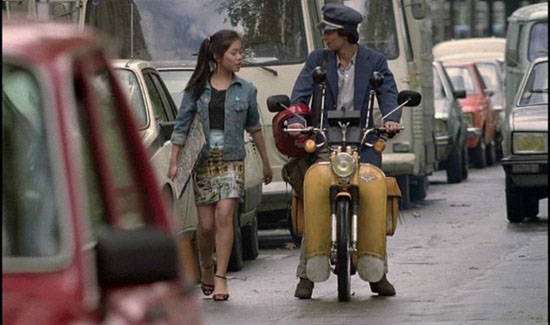Diva

Diva collides the images of Greek mythology with Paris in the 80s, filtered through American film styles. A world in which Classical Greek and Catholic symbolism co-exist in its blue dreamscapes. Below are the messenger boy Jules and Alba. I love this movie.

In the story, two audio cassettes become mixed up. One cassette is highborn (the diva’s singing) and one is lowborn (a prostitute's revelations). These neatly represent the two possibilities for technology art today – the imprisonment of beauty as a source of pleasure and contemplation, which is also a kind of sacrilege of the original artistic expression; and as a means of communication, which can also be a risky business if certain people do not want to hear its message. The film clearly identifies these two possibilities with art and business, and never the twain shall meet, though this film celebrates the opportunity to resolve them: Jules the thief gets to present his tape to the diva rather than destroying it, the other goes up in flames.
These cassette tapes (or all films for that matter) represent the blurring of the art vs business conflict and it might be fair to say that we can’t have one without the other. It is also noteworthy that in Diva it is always men seeking to exploit women, who find themselves caught in webs of dependency to managers or pimps.
Director Jean-Jacques Beineix's interest in moon and sun symbolism was taken a step further in his less successful follow-up film La Lune dans le caniveau (1983), which is known as Moon in the Gutter in the US. But "blue" was back by his next film, Betty Blue (1986).
